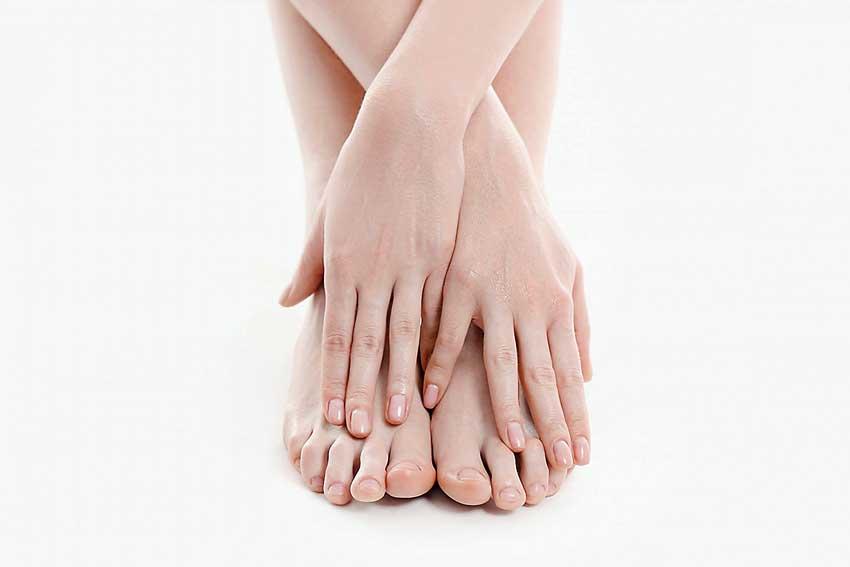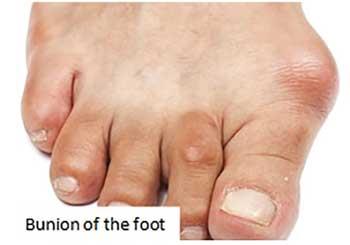03 Jul 2020 - {{hitsCtrl.values.hits}}

 Arthritis is a common term used to describe more than 200 conditions that cause joint inflammation leading to pain, swelling and disability. Among the various forms of arthritis, osteoarthritis and rheumatoid arthritis are frequently encountered at clinics. There is sufficient evidence to show that arthritis has been plaguing our ancestry as well. Whilst, numerous effective means of medications are available for treating arthritis, simple measures like proper foot care have a great impact on improving the quality of life of patients.
Arthritis is a common term used to describe more than 200 conditions that cause joint inflammation leading to pain, swelling and disability. Among the various forms of arthritis, osteoarthritis and rheumatoid arthritis are frequently encountered at clinics. There is sufficient evidence to show that arthritis has been plaguing our ancestry as well. Whilst, numerous effective means of medications are available for treating arthritis, simple measures like proper foot care have a great impact on improving the quality of life of patients.
When it comes to foot care, the selection of footwear is of utmost importance. Leonardo da Vinci once said, “The human foot is a masterpiece of engineering and a work of art”. Much thought should be invested before selecting suitable footwear for such a delicate structure. For patients with arthritis, it is mandatory to avoid high heels. High heels increase the strain on the back and knee, worsening the joint pains you experience. You should select comfortable footwear having a sole with proper padding. Cushioning effect provided by a comfortable shoe helps to reduce the strain on already weakened joints due to arthritis. If the padding provided by your footwear is inadequate you can insert gel cushion insoles that can be readily purchased from your pharmacy.

When you select a shoe, select one that has adequate space between the toes and the shoe box. This is specifically important for foot deformities that occur in long-standing arthritis such as hammertoe where the toe curl downwards instead of pointing forward. Avoid using cumbersome shoes, and try to replace shoes made of hard material like leather by softer and comfortable ones.
You may be suffering from ‘bunion’ of the foot, a painful bony bump that protrudes from inside of the foot at the big toe. It develops gradually and makes it painful for the patient to walk in shoes. We can make use of customized gel padding over the affected area to reduce the rubbing of the bony bump over the shoe. Heel cushions can be utilized for ‘calcaneal spur’, a brown overgrowth on the heel of the foot.
Many of you have experienced forefoot pain while walking. It can be caused by rheumatoid arthritis or bursitis, an inflammation in the fluid-filled sacs around the joints. Metatarsal gel cushion pads can be placed over joints of the forefeet to alleviate the pain.
Likewise, the heel and the sole can be customized to suit your arthritic condition and deformity. Medial (inner) sole wedges can be inserted to increase the weight-bearing on the outer border of the forefoot. Similarly, lateral (outer) sole wedges can increase the weight bearing on the inner border of the foot.
In certain arthritic conditions, the bones get fused limiting the rage of motion at joints. Excessive joint movements are detrimental to the affected joints. Inserting a rocker sole to your footwear helps to reduce excessive movements in the midfoot and forefoot.
Heel elevation can be done to fix the walking difficulty in those having leg length discrepancy. Various other modifications can be applied to your footwear to suit your arthritis. These services are freely provided in many general hospital’s in Sri Lanka through the prosthetic and orthotic department.
Many patients opt for medication and surgeries to relieve osteoarthritis-related knee pain and deformities. While these are highly effective treatment options, the age-old simple devices like walking cane tremendously improve the patient outcome in arthritis. We conducted a research study in Teaching hospital Anuradhapura to evaluate the effectiveness of walking canes on alleviating osteoarthritis-related knee pain. The patients who used walking canes experienced significant improvement in knee pain and less difficulty in daily activities. Assisting devices like walking canes, crutches and walkers widen the base support and improves stability while walking.
When it comes to foot care, we should focus on ‘exercise’ with a high priority. High impact exercises like running, jogging, squat jumps, lunges and jumping rope should not be practised as they increase the stress on joints. These will worsen the joint pains and speedup the joint destructive process. Instead, you can safely practice low impact exercises like swimming, walking and cycling. Especially when doing water associated exercises or hydrotherapy, the strain on joints is reduced due to the buoyancy of water. Weight reduction is also mandatory to gain a better outcome from most arthritic conditions. Squatting posture should be avoided because it increases the strain on knee joints. So, try your best to replace the squatting pan in the toilet to a high-rise toilet seat.
Diabetic patients need to pay much attention to their foot health. Long-standing diabetes can cause sensory impairment so that the patient is unaware when an injury occurs as he does not feel pain. Callosities are common in patients having arthritis and diabetes in places where maximum pressure is exerted. As a patient with diabetes, you must make it a habit to examine your feet regularly for small wounds especially in-between your toes. If you are having arthritis you may find it difficult to examine your feet due to inability to bend forward. In that case, you may use a mirror under your feet to carry out a proper examination. You must wipe and dry your feet thoroughly following a bath to reduce the risk of getting fungal infections.
Check the temperature of the water before washing your feet because burn injuries can result as you cannot feel the temperature properly. Cut your nails almost completely straight across. By doing so you can prevent the formation of ingrown toenails. Apply a moisturizer to prevent dryness and cracking of feet but make sure not to apply in between toes. It is habitual for many locals to walk barefoot, but it’s hazardous because your feet are more prone to get injured. Every step matter for a well-lived life, so always treat your feet right.
(The writer is a research doctor and serves the Rheumatology and Rehabilitation Department at the Teaching Hospital Anuradhapura)
21 Dec 2024 6 hours ago
21 Dec 2024 7 hours ago
21 Dec 2024 21 Dec 2024
21 Dec 2024 21 Dec 2024
21 Dec 2024 21 Dec 2024